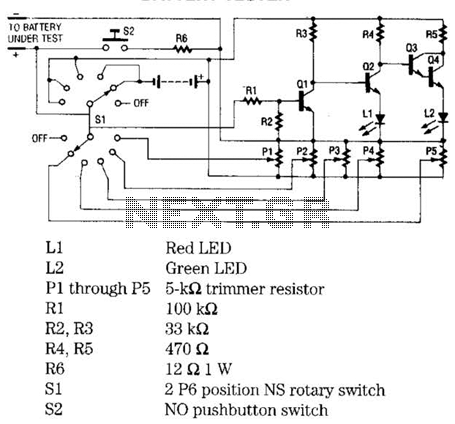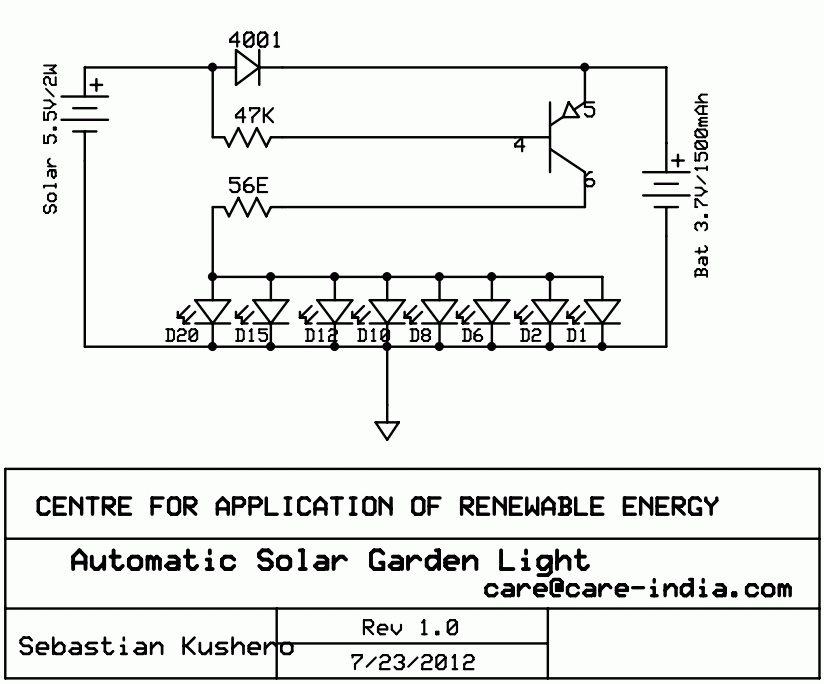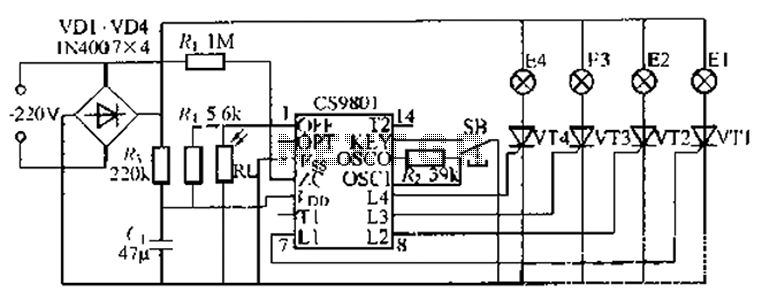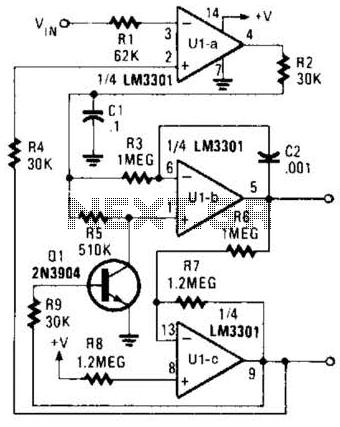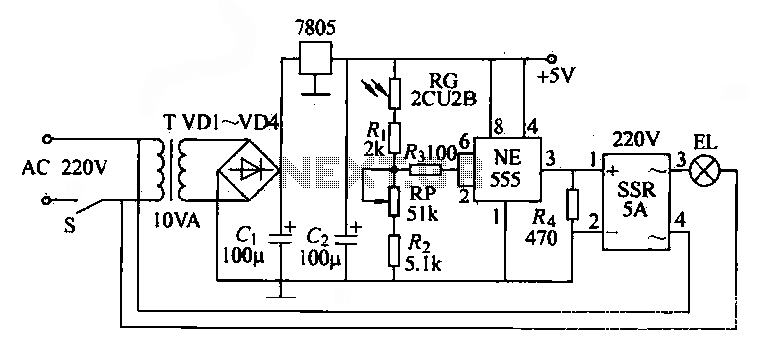
Automatic cycle switch circuit 2

An automatic cycle switch circuit utilizing a 555 integrated circuit (IC) as the control element. It incorporates a capacitive step-down circuit and employs a bidirectional thyristor to control relays or loads with specific on and off timing. The circuit includes adjustment potentiometers, RP1 and RP2 (or C1), which can be modified to change the pull-in and release times of relay KA. For instance, setting RPi to 300kΩ and RP2 to 220kΩ results in a pull-in time of 20 seconds and a release time of 15 seconds.
The automatic cycle switch circuit is designed around the versatile 555 timer IC, which functions in astable mode to generate a square wave output. This output controls a bidirectional thyristor, which in turn modulates the power delivered to connected relays or loads. The circuit effectively turns the relay on and off based on the timing parameters set by the potentiometers.
The capacitive step-down circuit is implemented to ensure that the voltage applied to the 555 timer is within its operational limits, thereby enhancing its reliability and performance. The choice of a thyristor allows for efficient switching with minimal power loss, making it suitable for applications where energy efficiency is paramount.
Adjustment potentiometers RP1 and RP2 play a crucial role in fine-tuning the operation of the relay. By varying the resistance values, the timing characteristics of the relay can be altered. For example, increasing the resistance of RP1 to 300kΩ extends the pull-in time to 20 seconds, while a resistance of 220kΩ at RP2 results in a release time of 15 seconds. This flexibility makes the circuit adaptable to various operational requirements.
Overall, this automatic cycle switch circuit represents a practical solution for applications requiring controlled switching of electrical loads, with the added benefit of timing adjustments to suit specific operational needs. Automatic cycle switch circuit 2 It uses 555 IC as the control element} A capacitive step-down circuit; bidirectional thyristor V control relays or loads on and off time. RPi a djustment potentiometer and RP2 (or Cl), respectively, can be changed relay KA pull and release time. As will RPi raised 300k, 0, RPz adjusted 220kfl, the pull-in time KA 20s, the release time is 15s.
The automatic cycle switch circuit is designed around the versatile 555 timer IC, which functions in astable mode to generate a square wave output. This output controls a bidirectional thyristor, which in turn modulates the power delivered to connected relays or loads. The circuit effectively turns the relay on and off based on the timing parameters set by the potentiometers.
The capacitive step-down circuit is implemented to ensure that the voltage applied to the 555 timer is within its operational limits, thereby enhancing its reliability and performance. The choice of a thyristor allows for efficient switching with minimal power loss, making it suitable for applications where energy efficiency is paramount.
Adjustment potentiometers RP1 and RP2 play a crucial role in fine-tuning the operation of the relay. By varying the resistance values, the timing characteristics of the relay can be altered. For example, increasing the resistance of RP1 to 300kΩ extends the pull-in time to 20 seconds, while a resistance of 220kΩ at RP2 results in a release time of 15 seconds. This flexibility makes the circuit adaptable to various operational requirements.
Overall, this automatic cycle switch circuit represents a practical solution for applications requiring controlled switching of electrical loads, with the added benefit of timing adjustments to suit specific operational needs. Automatic cycle switch circuit 2 It uses 555 IC as the control element} A capacitive step-down circuit; bidirectional thyristor V control relays or loads on and off time. RPi a djustment potentiometer and RP2 (or Cl), respectively, can be changed relay KA pull and release time. As will RPi raised 300k, 0, RPz adjusted 220kfl, the pull-in time KA 20s, the release time is 15s.
